Known as the "green pearl" of Northeast Vietnam, Cao Bang is renowned for its pristine landscapes, featuring dramatic mountains and breathtaking waterfalls. This serene destination offers a refreshing retreat from the hustle and bustle of everyday life. Discover with Frontier Travel Vietnam the top 10 spectacular attractions in Cao Bang, each promising an unforgettable experience in this natural haven.
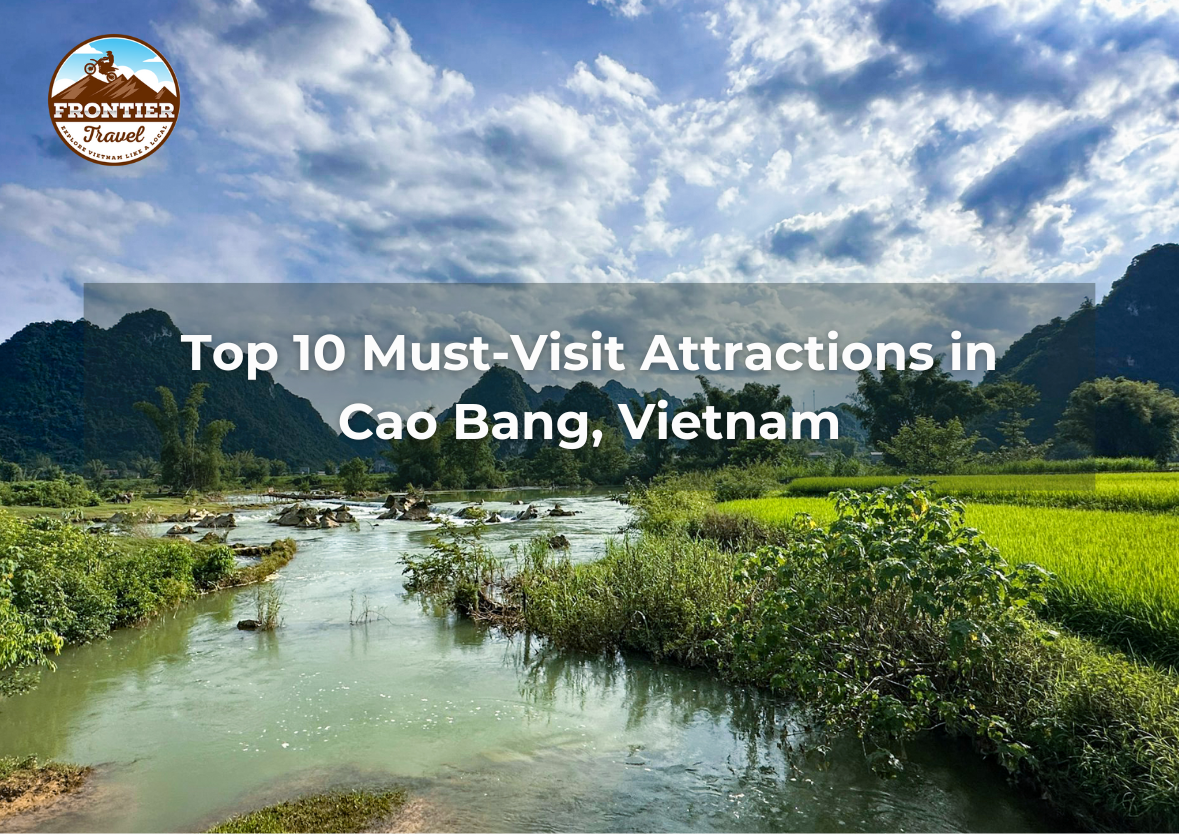
1. Ban Gioc Waterfall
- Address: Dam Thuy Commune, Trung Khanh District, Cao Bang Province
- Sightseeing Fee: VND 45,000
.jpg)
Ban Gioc Waterfall, the largest waterfall in Vietnam, is an absolute must-visit attraction in Cao Bang. With a height of 60 meters and a width of 300 meters, this magnificent waterfall features three tiers of limestone rock, creating a breathtaking display of nature's power and beauty.
The waterfall enchants visitors with its grand scenery, set against a backdrop of lush forests and towering mountains. The Quay Son River cascades over the rocks, forming smaller waterfalls and contributing to the area’s stunning landscape. Ban Gioc Waterfall offers a unique charm throughout the year. During the rainy season (June to August), the waterfall roars with powerful, frothy water, while from September to October, it is framed by the golden hues of nearby rice fields, adding to its picturesque allure.
What to Prepare When Visiting Ban Gioc Waterfall: Wear comfortable walking shoes that are suitable for uneven terrain. Bring along a hat, sunscreen, and insect repellent to shield yourself from the elements. If you plan to enjoy a boat ride, consider packing a raincoat or waterproof gear to stay dry from splashes. And, of course, don’t forget your camera to capture the breathtaking views.
2. Nguom Ngao Cave
- Address: Dam Thuy Commune, Trung Khanh District, Cao Bang Province
- Sightseeing Fee: VND 35,000

Formed over 400 million years ago, Nguom Ngao Cave was opened to tourism in 1996. Its name, "Nguom Ngao," translates to "Tiger Cave" in the Tay language. Located in the Chongqing district, this expansive limestone cave stretches over 2,100 meters in length.
The cave features three main entrances: Nguom Lom, Nguom Ngao, and Ban Thuon. As you enter Nguom Ngao, you'll be struck by its awe-inspiring natural beauty. The cave is adorned with stunning stalactites and stalagmites of unique shapes and vibrant colors, creating a mesmerizing underground landscape.
One of the cave's remarkable features is its pleasant temperature, remaining cool in the summer and warm in the winter. You’ll also hear the soothing sound of small, gurgling streams as you explore this fascinating Cao Bang attraction.
3. Pac Bo Historical Site
Address: Pac Bo Commune, Ha Quang District, Cao Bang Province
Sightseeing Fee: VND 25,000
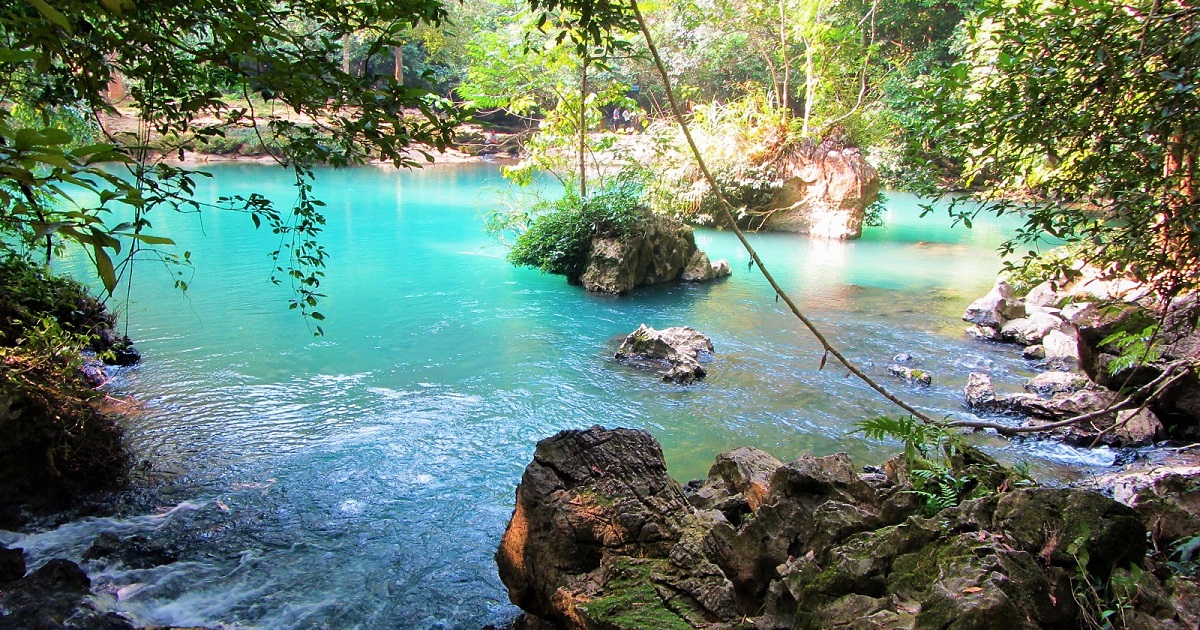
Pac Bo Historical Site is a must-visit destination in Cao Bang, offering a profound glimpse into Vietnam's revolutionary history. This site was where President Ho Chi Minh, the leader of the Vietnamese independence movement, lived and organized revolutionary activities during the early days of the struggle for independence. The site preserves significant relics from his life and career, providing visitors with a unique opportunity to connect with Vietnam’s revolutionary past.
Highlights:
- Pac Bo Cave (Coc Bo Cave): This small cave, measuring just 15 square meters, holds historical significance with numerous traces of Ho Chi Minh's presence. To reach the cave, you'll cross a wooden bridge over a stream and then ascend approximately 300 stone steps along the mountainside. Inside the cave, you'll find well-preserved items such as a wooden bed, a fireplace, and a stone table that Ho Chi Minh used during his stay.
- Karl Marx Mountain: This mountain features an open yet discreet terrain, ideal for revolutionary activities. Surrounded by impressive rock cliffs and lush forests, Karl Marx Mountain offers breathtaking views and a serene atmosphere.
- Lenin Stream: Lenin Stream is renowned for its pristine and tranquil environment. The stream maintains a crystal-clear, turquoise hue throughout most of the year, except during the rainy months of July and August when it may become murky.
When visiting Pac Bo Historical Site, it's highly recommended to take a guided tour to fully appreciate the historical significance of the various sites. The best time to visit is during the dry season from November to April, as the weather is more favorable for exploration, though the site is open year-round. Plan to spend approximately 2 to 3 hours at Pac Bo to thoroughly explore the key attractions and gain a deeper understanding of the historical context.
4. Thang Hen Lake
Address: Tra Linh District, Cao Bang Province
Sightseeing Fee: VND 20,000
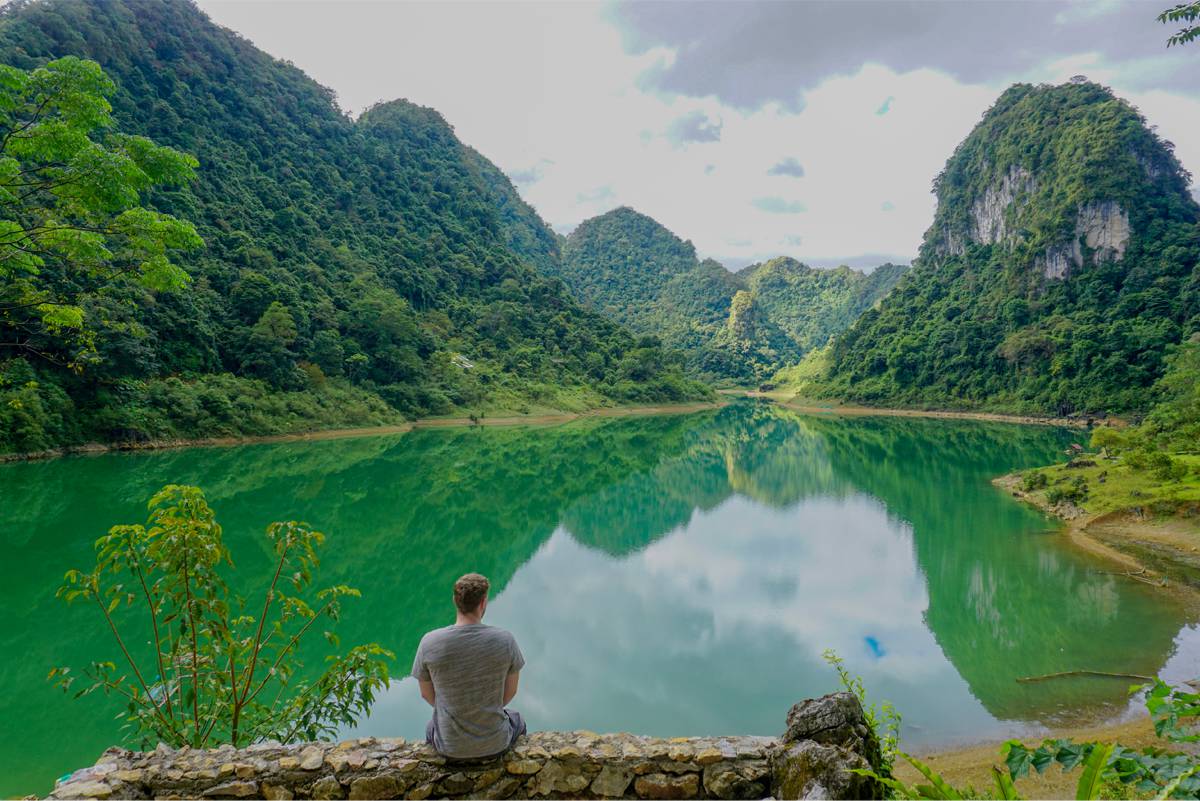
Thang Hen Lake is a stunning and tranquil destination nestled in Tra Linh District, Cao Bang. Part of a complex of 36 natural lakes situated at nearly 1,700 meters above sea level and connected through an underground cave system, Thang Hen Lake is the largest and most renowned among them. Known for its picturesque scenery, the lake features emerald green waters that beautifully reflect the surrounding clouds and sky. The area is encircled by primeval forests and vibrant wildflower beds, making it one of Northern Vietnam's most scenic spots.
Highlights:
- Boating Opportunities: Enjoy a peaceful boat ride on the lake, offering a unique perspective of its pristine waters and surrounding landscape.
- Local Fishing Culture: Experience the local fishing practices and observe the traditional methods used by the local communities.
- Stunning Sunrise and Sunset Views: The lake offers breathtaking views at sunrise and sunset, with the changing light creating a magical atmosphere.
For a memorable visit to Thang Hen Lake, aim to arrive early for a breathtaking sunrise or later in the day to catch a spectacular sunset. The peaceful environment is ideal for a picnic, so pack some refreshments to enjoy by the lake. Besides boating, explore the area with a hike around the lake to fully appreciate the picturesque scenery and natural beauty.
5. Cao Bang Geopark
- Address: Cao Bang Province, Vietnam
- Sightseeing Fee: VND 50,000
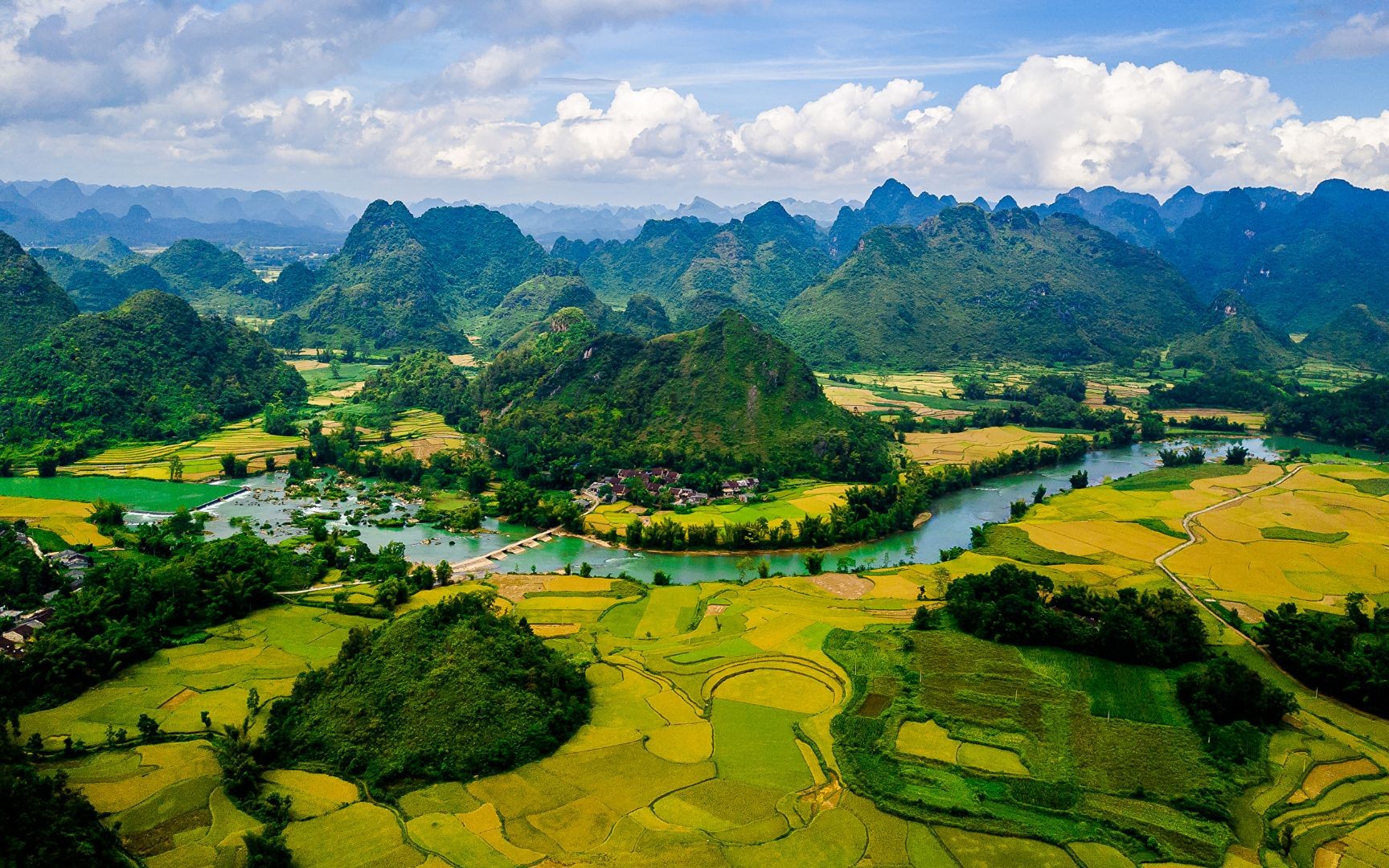
Cao Bang Geopark, a UNESCO-recognized Global Geopark, showcases a remarkable range of geological landscapes and natural wonders. Spanning a vast area, this geopark is renowned for its unique rock formations, rich historical sites, and diverse flora and fauna. It offers a fascinating exploration of Vietnam's geological heritage and natural beauty.
Highlights:
- Unique Rock Formations: Discover extraordinary geological features, including striking karst landscapes and intricate limestone formations that define the park’s terrain.
- Historical Sites: Explore various historical and cultural landmarks within the park, adding a layer of historical context to the natural wonders.
- Diverse Flora and Fauna: Experience the park’s rich biodiversity, with numerous plant and animal species that thrive in its varied habitats.
Tips when visiting Cao Bang Geopark:
- How to Explore the Park: You can explore Cao Bang Geopark either by joining guided tours or self-driving. Guided tours offer expert insights into the park’s geology and history, while self-driving provides flexibility to visit different areas at your own pace.
- Must-See Spots: Key attractions include the stunning karst formations, notable historical sites, and scenic viewpoints throughout the park. Be sure to visit the most popular and significant spots to fully experience the park’s offerings.
- Safety Information: Wear appropriate hiking shoes and bring essentials such as water, sunscreen, and insect repellent. Follow park guidelines and stay on designated trails to ensure a safe and enjoyable visit.
Address: Quang Uyen District, Cao Bang Province

On the route to Ban Gioc Waterfall from Cao Bang city, you’ll find two captivating handicraft villages in Quang Uyen District that offer a deep dive into the traditional crafts and daily life of local ethnic groups. These villages provide a unique glimpse into the rich cultural heritage of the Nung and Nung An ethnic minorities.
Highlights:
- Phia Thap Village: Located in Quoc Dan Commune, this village is home to 50 families from the Nung ethnic minority. The villagers are renowned for their incense-making craft, which has been a tradition for generations. The village is particularly lively around the Lunar New Year as they prepare large quantities of incense made from natural ingredients, producing a distinctive fragrance. Visitors can observe the entire incense-making process and interact with local artisans.
- Pac Rang Village: Situated in Phuc Sen Commune, Pac Rang is known for its traditional forging practices. The village is inhabited by 51 households of the Nung An ethnic minority. Almost every home features a furnace where villagers craft various forged items, such as knives, hoes, and shovels. The village also maintains its cultural traditions, with stilt houses and traditional dress, and engages in agriculture alongside their forging activities.
Tips when visiting ethnic handicraft villages:
- Best Times to Visit: For Phia Thap Village, visit during the months leading up to the Lunar New Year to witness the incense-making process in full swing. For Pac Rang Village, any time of year is suitable to see traditional forging in action and explore the village’s cultural practices.
- Purchasing Local Crafts: Both villages offer opportunities to purchase handcrafted items. Phia Thap specializes in incense, while Pac Rang features forged tools and other items. Buying these crafts supports local artisans and provides unique souvenirs.
- Respecting Local Customs: When visiting these villages, be respectful of local traditions and customs. Dress modestly, ask for permission before taking photos, and engage with the villagers in a manner that honors their cultural heritage.
7. Khuoi Ky Stone Village
- Address: Dam Thuy Commune, Trung Khanh District, Cao Bang Province
- Distance: Approximately 3 kilometers from Ban Gioc Waterfall and 100 kilometers from Cao Bang city center
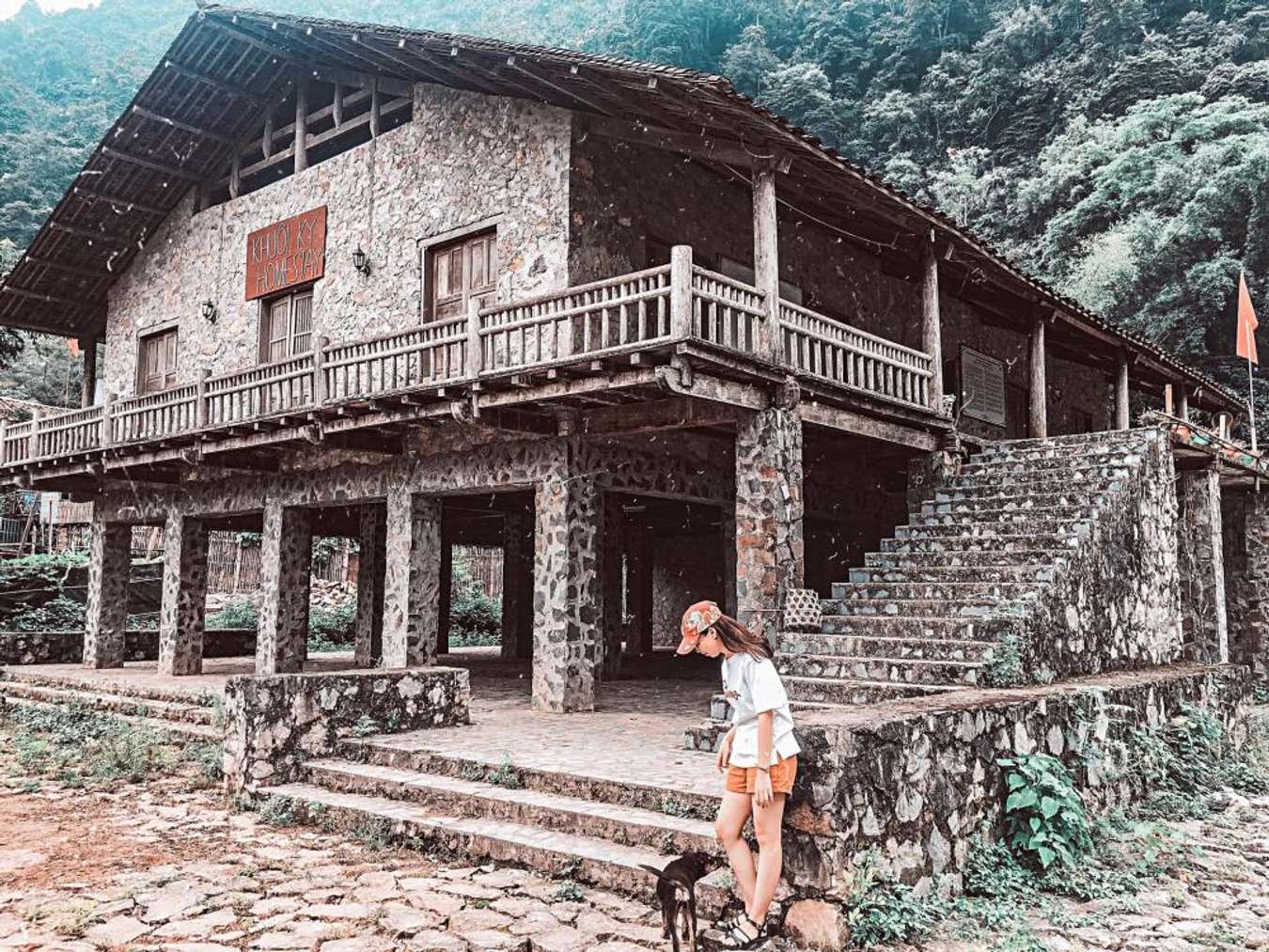
Khuoi Ky Stone Village, located near the Vietnam-China border, is a fascinating destination renowned for its unique stone houses and rich cultural heritage. This ancient village is home to 14 Tay ethnic households living in traditional stone houses on stilts, which have stood for centuries. The stilt houses are considered sacred by the Tay people, preserving their traditional material and spiritual life across generations. Visiting Khuoi Ky offers a chance to immerse yourself in the pristine natural surroundings while exploring the history and culture of the Tay people.
Highlights:
- Traditional Tay Architecture: Admire the distinctive stone houses on stilts, which showcase the traditional architectural style and craftsmanship of the Tay ethnic group.
- Local Hospitality: Experience the warm and welcoming nature of the Tay people, who are known for their friendliness and hospitality.
- Cultural Activities: Engage with local cultural activities and learn about the Tay people’s way of life, their traditions, and historical development.
Tips when visiting Khuoi Ky Stone village:
- How to Get There: Khuoi Ky Stone Villag
- e is about 3 kilometers from Ban Gioc Waterfall, making it an easy addition to your itinerary. It’s roughly 100 kilometers from Cao Bang city center, so plan your travel accordingly.
- What to See and Do: Explore the ancient stone houses, interact with local residents, and take in the scenic beauty of the village. Learn about the traditional lifestyle and cultural practices of the Tay people.
- Suggestions for Respectful Engagement: Show respect for local customs and traditions. Seek permission before taking photos, dress modestly, and engage with the villagers in a way that honors their cultural heritage.
8. Phia Oac National Park
- Address: Thanh Cong Commune, Nguyen Binh District, Cao Bang Province
- Sightseeing Fee: VND 40,000
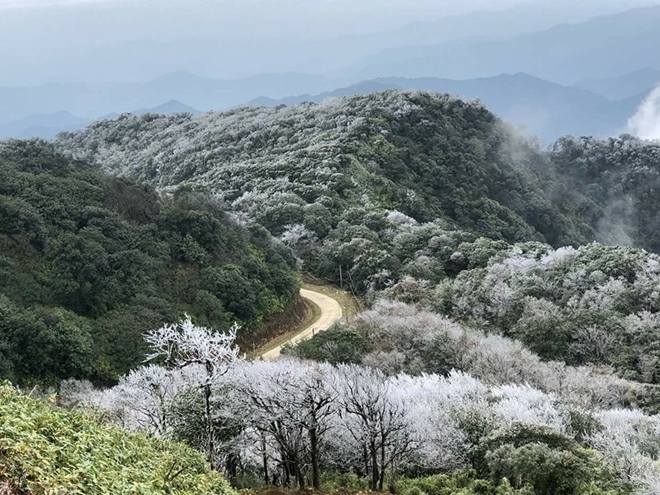
Phia Oac National Park, a pristine nature reserve within the Non Nuoc Cao Bang Geopark, spans over 10,500 hectares across several communes and reaches nearly 2,000 meters above sea level. Recognized as the first national park in Cao Bang Province, it boasts a diverse and untouched forest ecosystem. Home to nearly 2,000 species of rare animals and plants, many listed in the World Red Book, the park offers spectacular natural landscapes and significant ecological value.
Highlights:
- Trekking Opportunities: Explore various trails through the high-altitude forests, offering different levels of difficulty and unique scenic views.
- Bird Watching: The park is a haven for bird enthusiasts, with many rare and endemic species to observe.
- Hidden Waterfalls: Discover beautiful, hidden waterfalls that add to the park’s enchanting scenery.
Tips when visiting Phia Oac National Park:
- Best Trails for Exploration: Research and choose trails that match your fitness level and interests. Trails vary from easy walks to more challenging treks, each offering unique vistas and wildlife sightings.
- What to Pack: Bring appropriate hiking gear, including sturdy shoes, weather-appropriate clothing, a hat, sunscreen, and insect repellent. Don’t forget a camera to capture the park’s stunning landscapes and wildlife.
- Regulations to Follow: Respect park regulations to help preserve its natural beauty. Stay on marked trails, avoid disturbing wildlife, and follow any additional guidelines provided by park staff to ensure a safe and environmentally friendly visit.
9. Ma Phuc Pass
Address: Tra Linh District, Cao Bang Province
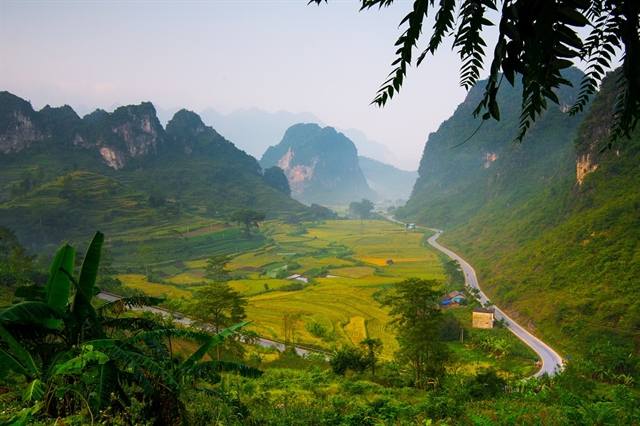
Ma Phuc Pass is renowned as the most stunning pass in Cao Bang Province, offering breathtaking views and a dramatic drive. Stretching approximately 3.5 kilometers with an altitude of 700 meters above sea level, this pass winds through limestone mountains and valleys, resembling the back of a horse, which is reflected in its name. Recognized as a geological heritage site within the Non Nuoc Cao Bang Global Geopark, Ma Phuc Pass provides an unforgettable experience for nature lovers and adventure seekers.
Highlights:
- Popular Spot for Motorbike Riders and Photographers: The pass is a favorite among motorbike enthusiasts and photographers, offering unique and awe-inspiring perspectives of the surrounding landscape.
- Panoramic Views: Enjoy sweeping views of rugged mountains, lush valleys, and expansive skies, which are particularly striking from various viewpoints along the pass.
- Fresh Air: The high altitude and mountainous terrain provide crisp, refreshing air, enhancing the scenic experience.
Tips when visiting Ma Phuc Pass:
- Safety Advice for Riders: Given that Ma Phuc Pass is known for being one of the more dangerous roads in Vietnam, ensure your motorbike is in good condition and drive carefully. Be cautious of sharp turns and varying road conditions.
- Best Viewpoints: Look for designated stopping points along the pass to take in the panoramic views and capture photographs. These spots offer the best vantage points for appreciating the pass’s beauty.
- Weather Considerations: Check the weather forecast before your visit. The pass can be challenging to navigate in adverse weather conditions, such as rain or fog, which can reduce visibility and increase the risk of accidents.
10. Mat Than Mountain
- Address: Quoc Toan Commune, Tra Linh District, Cao Bang Province
- Distance: Approximately 50 kilometers from Cao Bang city center
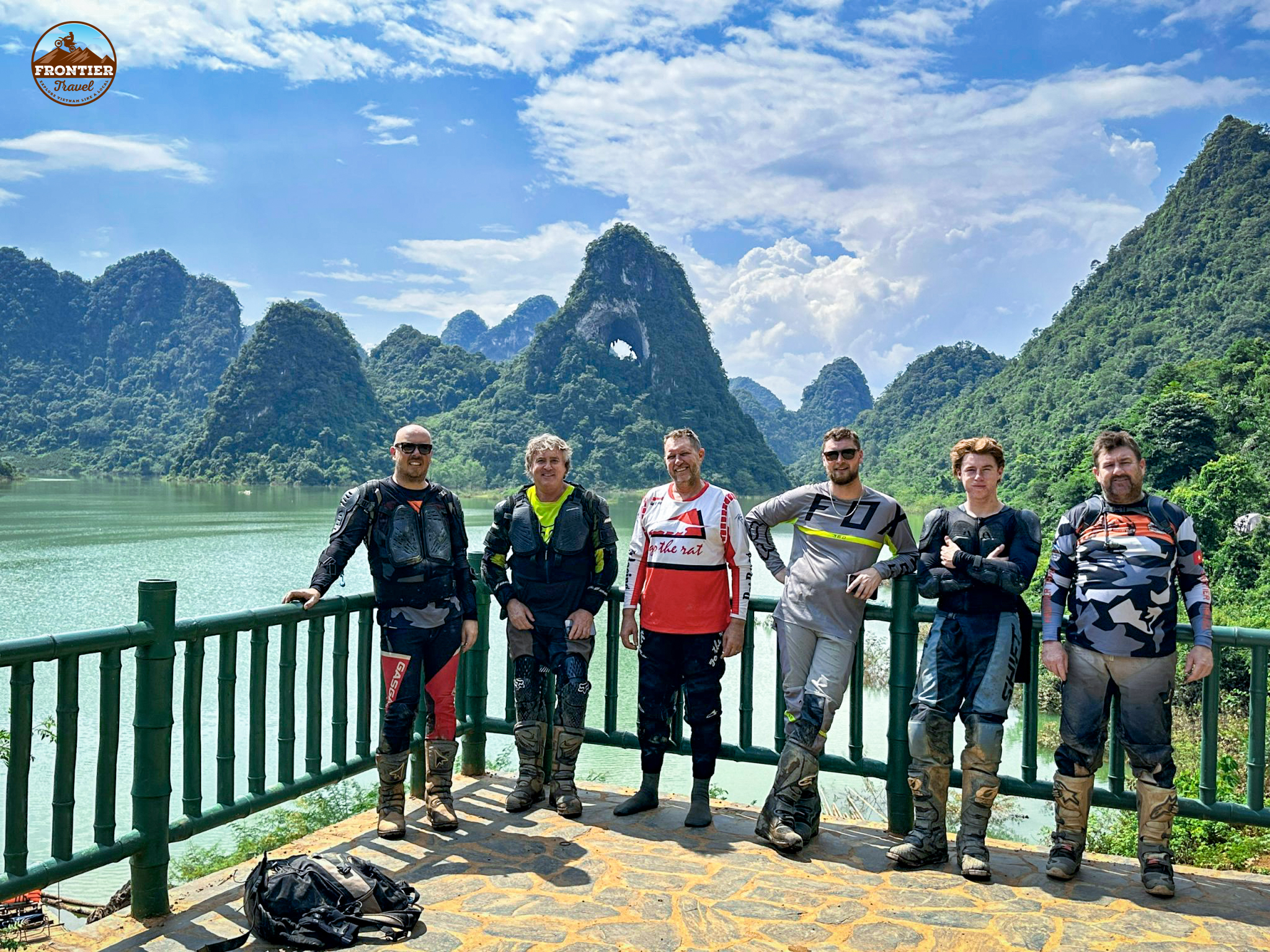
Mat Than Mountain, also known as Thung Mountain, is a remarkable natural attraction in Cao Bang Province. The mountain is notable for its distinctive circular hole, resembling an eye, that pierces through the rock. This unique feature contributes to its captivating appearance. Surrounded by a vast valley with lush green grass and serene, wild landscapes, Mat Than Mountain offers a tranquil escape from the hustle and bustle of city life. The area is ideal for enjoying peaceful scenery and observing cows and horses grazing on the grasslands. Additionally, the nearby Nam Tra Waterfall is another worthy destination to explore.
Highlights:
- Unique Mountain Feature: The circular hole in Mat Than Mountain gives it the nickname "Thung Mountain" and provides a unique visual element that makes it stand out.
- Serene Landscape: The expansive green valley and peaceful surroundings create a relaxing environment perfect for nature lovers.
- Local Wildlife: Observe cows and horses grazing on the grasslands, adding to the rural charm of the area.
Tips when visiting Mat Than Mountain:
- How to Get There: To reach Mat Than Mountain, you’ll need to travel about 50 kilometers from Cao Bang city center, passing through the famous Ma Phuc Pass. The drive offers additional scenic experiences.
- What to See and Do: Explore the striking circular hole in the mountain, enjoy the peaceful valley, and consider visiting the nearby Nam Tra Waterfall for a complete natural experience.
Cao Bang, with its stunning waterfalls, serene lakes, and majestic mountains, is a hidden gem in Northeast Vietnam. From the powerful Ban Gioc Waterfall to the unique landscapes of Ma Phuc Pass and the rich heritage of local villages, each destination offers its own charm. Discover these must-visit spots with Frontier Travel Vietnam and immerse yourself in the natural beauty and cultural richness of this remarkable region.






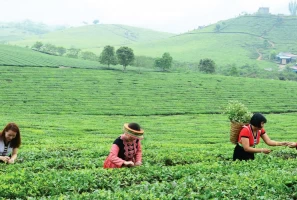
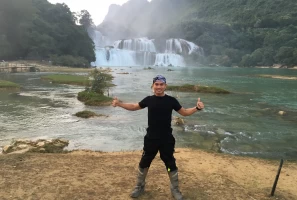

.png)